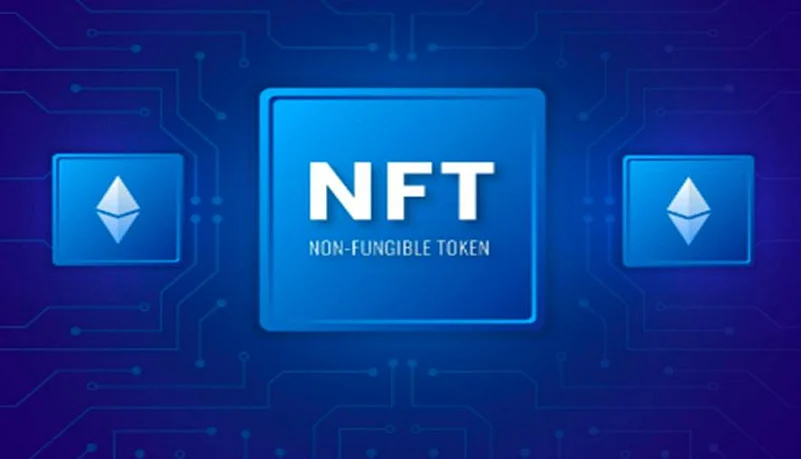Non-Fungible Tokens, or NFTs, have quickly evolved from corner-blockchain tokens to a global phenomenon that is revolutionizing the ownership, trading, and engagement of digital content. At the center of this ecosystem are NFT marketplaces—where people can mint, purchase, sell, and trade these one-of-a-kind digital tokens.
As NFTs have evolved to include a variety of applications—ranging from digital art and music to virtual land and identity verification—so too have the marketplaces that facilitate them. Each type of marketplace caters to different creators, collectors, and use cases. Understanding these categories is essential for navigating the NFT space wisely, whether you’re an artist, investor, developer, or just curious.
Let us move on to the two main forms of NFT marketplaces, their definition, functionality, and the kind of user they suit best.
1. Open NFT Marketplaces
Open marketplaces are the most prevalent and amateur-friendly form of NFT platforms. They permit anyone to create, publish, sell, or purchase NFTs with no sort of approval or filtering. These marketplaces tend to be multi-category and enable a broad variety of digital assets which include art, collectibles, domains, and virtual goods.
Such platforms have been praised for ease, vast numbers of users, and consequently readability for new creators and collectors. Open marketplaces have been observed to provide minting tools, programmable royalty rates, and support for a variety of blockchains to provide cost savings and scalability.
OpenSea and Rarible are two perfect examples, with millions of NFTs and creators accessible on a variety of blockchain networks. They have democratized NFT access by eliminating the technical hurdle and creating creative freedom.
But since they are open, quality also remains inconsistent, and buyers will need to perform their own due diligence while purchasing to prevent buying imitation or low-effort collections.
2. Curated or Exclusive Marketplaces
Curated marketplaces are more selective and elegant in their approach. They allow only invited or pre-approved artists to sell NFTs. They are calibrated to maximize quality, originality, and authenticity at the expense of quantity.
The curation process generally involves posting a proposal or portfolio and waiting for approval by a panel or committee. The idea is to present upscale photography or digital art that serious investors and collectors would want to know about.
Marketplaces such as SuperRare and Foundation are popular curated marketplaces. They can be similarly compared to classical fine art galleries, with artworks hand-curated and emphasize curating an elite ecosystem of elite artists and passionate enthusiasts.
Though such exclusivity is prestigious and trustworthy, it may also prove challenging for the entrance of new creators. However, for those who are in it, rewards in the way of increased exposure, better quality pricing, and an artistic honesty-respecting collector community are on the table.
3. Gaming-Focused NFT Marketplaces
Gaming has become the most innovative channel for NFT adoption. On NFT marketplaces in online games, the digital assets that are bought and sold are in-game assets—like avatars, skins, guns, virtual land, or even game currency.
They enable players to buy, sell, and even level up their in-game assets. More specifically, they provide a connection between blockchain technology and rich, interactive entertainment. This is particularly pertinent to play-to-earn (P2E) or GameFi scenarios, where players can obtain NFTs from gameplay and swap or sell them for real-world value.
Game marketplaces would rather tap into game titles and their creators directly in order to ensure that assets bought can be used inside gameplay. Immutable X, for example, is a home to successful blockchain games such as Gods Unchained, and Enjin, where there exists a set of tools for deploying NFTs in games.
These marketplaces are perfect for game players, creators, and collectors who adore the enjoyment and utilization of owning properties that are more than simply held in a wallet—they are part of an ecosystem.
4. Music and Media Marketplaces
NFTs are transforming music artists' and media artists' relationships with their audiences. Music NFT marketplaces enable artists to tokenize singles, albums, back-stage passes, concert tickets, and even unreleased demos in the form of NFTs.
These platforms provide musicians with direct access to monetization and distribution, with a reduced dependence on streaming sites or record labels. Fans, on the other hand, are repaid with the possession of exclusive content, early access rights, or even royalty shares through smart contracts.
Platforms such as Royal and Audius are at the forefront of this movement. They promote decentralized music economies in which artists are able to create fanbases, reward collectors, and establish enduring value on digital recordings.
Outside of music, these marketplaces are also venturing into other media including podcasts, documentaries, and shorts. For artists who prefer to stay independent and connected to listeners, music and media marketplaces are a thrilling, revolutionary option.
5. Visual Media and Photography Marketplaces
With the digitalization of content, photographers and visual narrators have discovered new approaches to exhibiting and selling their work in the form of NFTs. They are dedicated platforms for high-definition static photography, conceptual visual scenes, and even brief video segments of art.
These sites value quality and many include tools for selling collections, creating themes, and creating limited editions. Having copyright protection in the form of blockchain timestamping allows photographers to secure their work while offering them the capability to control how it's shared and resold.
Members of these types of sites are served by Sloika and Voice, who provide eco-friendly minting processes and policies based on creators.
For image makers, movie makers, and multimedia creators, these sites not only offer monetary rewards, but also a virtual portfolio which raises the profile and credibility.
6. Virtual Property and Real Estate Marketplaces
A highly unusual and emerging segment of the NFT world is tokenized property, both virtual and real world. These sites offer the sale, renting, and buying of virtual parcels of land, metaverse buildings, or tokenized real world assets.
Virtual properties are bought by users in virtual worlds such as Decentraland or The Sandbox as NFTs. The virtual properties may be used to construct shops, organize events, sell products, or create games—building a whole economy on virtual ownership.
Conversely, others like Propy specialize in sales of real-world physical properties, where legal title of physical property is stored on the blockchain in NFTs. Smart contracts are used to effect title transfer, minimize paperwork, and make everything transparent.
This kind of marketplace is suited for technologically inclined investors, developers, and early metaverse pioneers who understand the long-term benefit of owning both virtual and physical property.
7. Niche and Utility-Driven Marketplaces
Not all NFTs are collectible or for display. Some are only to fulfill a function—authenticate identity, provide access, or confirm an individual was present at an event in person or online. Utility-based NFT platforms host such tokens.
They're built on top of particular use cases: issuing educational diplomas, membership tickets, VIP, DAO voting, or event tickets. They normally plug directly into platforms that need token gating, so they guarantee access is only provided to NFT holders.
Shining examples include POAP (Proof of Attendance Protocol), where attendees receive a provable NFT badge for getting to webinars, conferences, or meetups. MintGate is another that enables creators to limit access to material based on the ownership of tokens.
These marketplaces are becoming popular as more Web3-native communities and DAOs need new tools for governance and access.
Final Thoughts
With the maturation of the NFT marketplace, so too does the ecosystem of marketplaces that enable it. There is a different type of NFT marketplace for every niche and each catering to a specific community of users—from open markets for newcomers to specialized venues for digital fine art, from game worlds to music economies, and from photography cooperatives to property ventures.
The platform that is best suited for you all just depends on what you are trying to do. If you want to mint your first series, purchase a virtual plot of land, or collect paid music royalties, there is a marketplace for you.
Knowing the various kinds of NFT marketplaces isn't just useful—it's necessary. In a decentralized world that's emerging and value is still being placed on digital ownership, knowing where and how to be involved means you can make sound, strategic decisions in accordance with your creative or financial goals.
NFT marketplaces aren't merely websites—they're portals to the future of digital economy, creativity, and community.
























